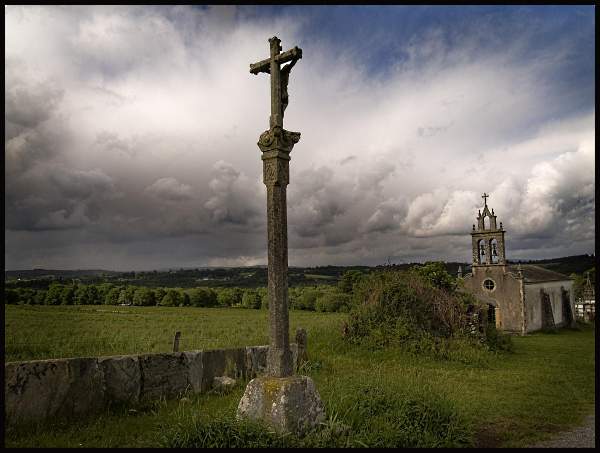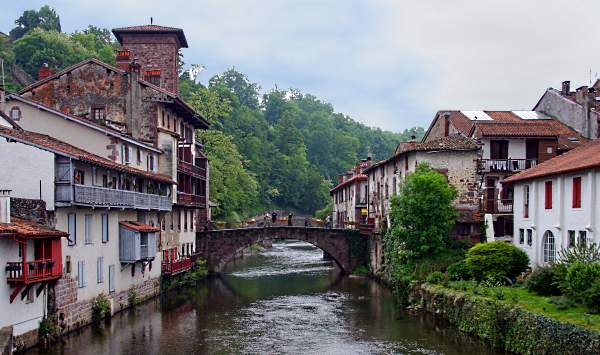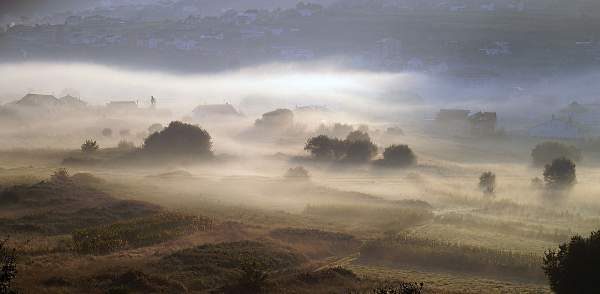
The Cathedral at Santiago de Compostela is journey’s end for El Camino de Santiago (Way of St. James in English), an ancient pilgrimage that still thrives today. For more than a thousand years, hikers far and wide have trodden this path to pay homage to the apostle St James, and visit the rumoured site of his remains.
The first travellers made the trip as early as the ninth century, and the route has changed remarkably little since then. What’s more, today’s Camino seldom diverges from an itinerary produced in 1140 by the French monk Aymeric Picaud. On the trail you’ll find yourself seeing and doing many of the things that this man recommended so long ago.

The traditional starting-point for many pilgrims is at the commune of Saint-Jean-Pied-de-Port, 8km away from the Spanish border in Aquitaine, southern France. At any rate, there is an entire system of hiking routes that span the whole of Europe, and lead straight to the world heritage site at Santiago.
Setting out from Saint-Jean-Pied-de-Port means following ‘El Camino Francés’, which more or less takes you across the width of northern Spain – from the rolling hills of the Basque country, to the warm flatlands of León, and culminating with the mild and grassy high ground in Galicia. Weary pilgrims can expect to traipse into Santiago after walking this path for a month or more.
Hostels are found at regular intervals along the route, and are supported by volunteers who want to see the pilgrimage succeed in the future. The camino routes and albergues (hostels) were the idea of the Spanish Federation of Friends on the Camino which was formed in 1987 in Jaca. The albergues are maintained by the Church, various confraternities, municipalities and private individuals - not the Spanish Tourist Board as is commonly thought.
When embarking upon the route, Pilgrims are given a passport, and get it validated on the way to document their journey and to make certain that they qualify for the compostela – a certificate issued in Santiago to record completion of 100km or more on foot. However, this only counts the last 100km, or cycling or horseriding the last 200km of the route to Santiago. Even if one walks 5000km, no Compostela is awarded unless you do the last 100km or 200km to Santiago.

The Compostela has nothing to do with time off purgatory! It is merely a certificate, designed in the 1970's, given to those who walk, ride or cycle to Santiago. Indulgences are the 'get out of purgatory' documents - given to anyone who visits the Tomb of St. James, not only walkers who complete the compostela.
To gain a plenary indulgence a person must exclude attachment to sin of any kind, and must fulfill the three conditions of sacramental confession, Eucharistic communion and praying for the intentions of the Holy Father.
The year 2010 is especially important for the Way, as it is a Holy Compostellan year because St James’s Day - the 25th of July - falls on a Sunday.
El Camino de Santiago has always been for everyone, not just the most devout believers of all faiths. A 12th Century hymn, the La Pretiosa, sung at the pilgrims' blessing in Roncesvalles states that:
Its doors are open to the sick and well
to Catholics as well as to pagans,
Jews, Heretics, beggars and the indigent,
and it embraces all like brothers.
For those of a more religious slant, a Pilgrim's Mass is held in the Cathedral of Santiago de Compostela each day at noon for pilgrims. Pilgrims who received the compostela the day before have their countries of origin and the starting point of their pilgrimage announced at the Mass. The musical and visual highlight of the mass is the synchronisation of the beautiful "Hymn to Christ" with the spectacular swinging of the huge Botafumeiro, the famous thurible kept in the cathedral.
However, these days it’s a much more secular affair. Many people see it simply as a tough test of commitment; forty days on foot is not to be taken lightly.
Only a portion of travelers now set out on the Way with a spiritual intention, but in the tales they recount after finishing the trek, it’s clear that they learn something about themselves on the long road to Santiago – and return to the everyday lives with a different perspective on things.
Photos by Manu gomi (1), Patxi64 (2), nick.garrod (3) on flickr
You should follow me on twitter here.
Great photos and information. What a rich history this walk has.
Suzy on 07 April, 2010